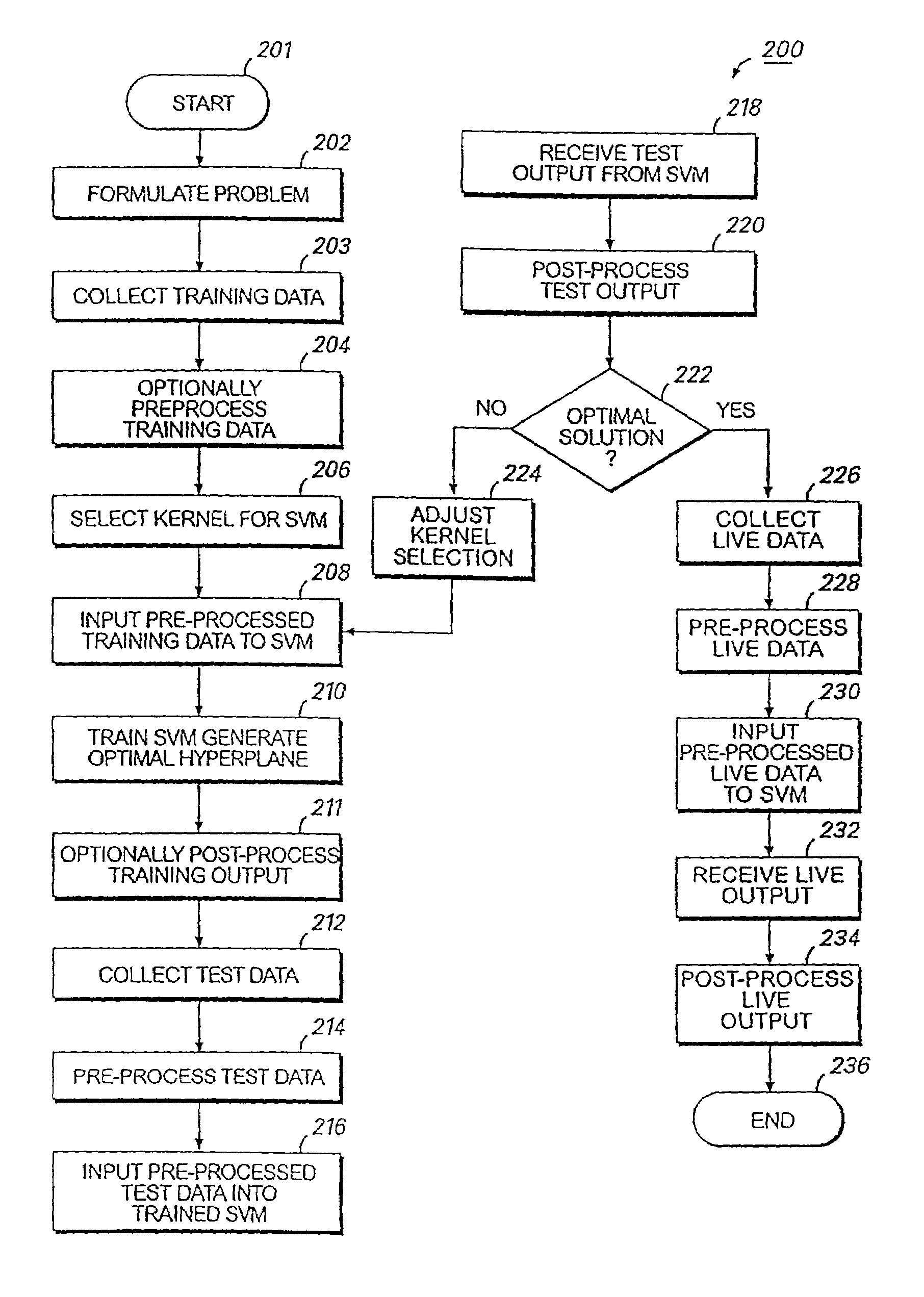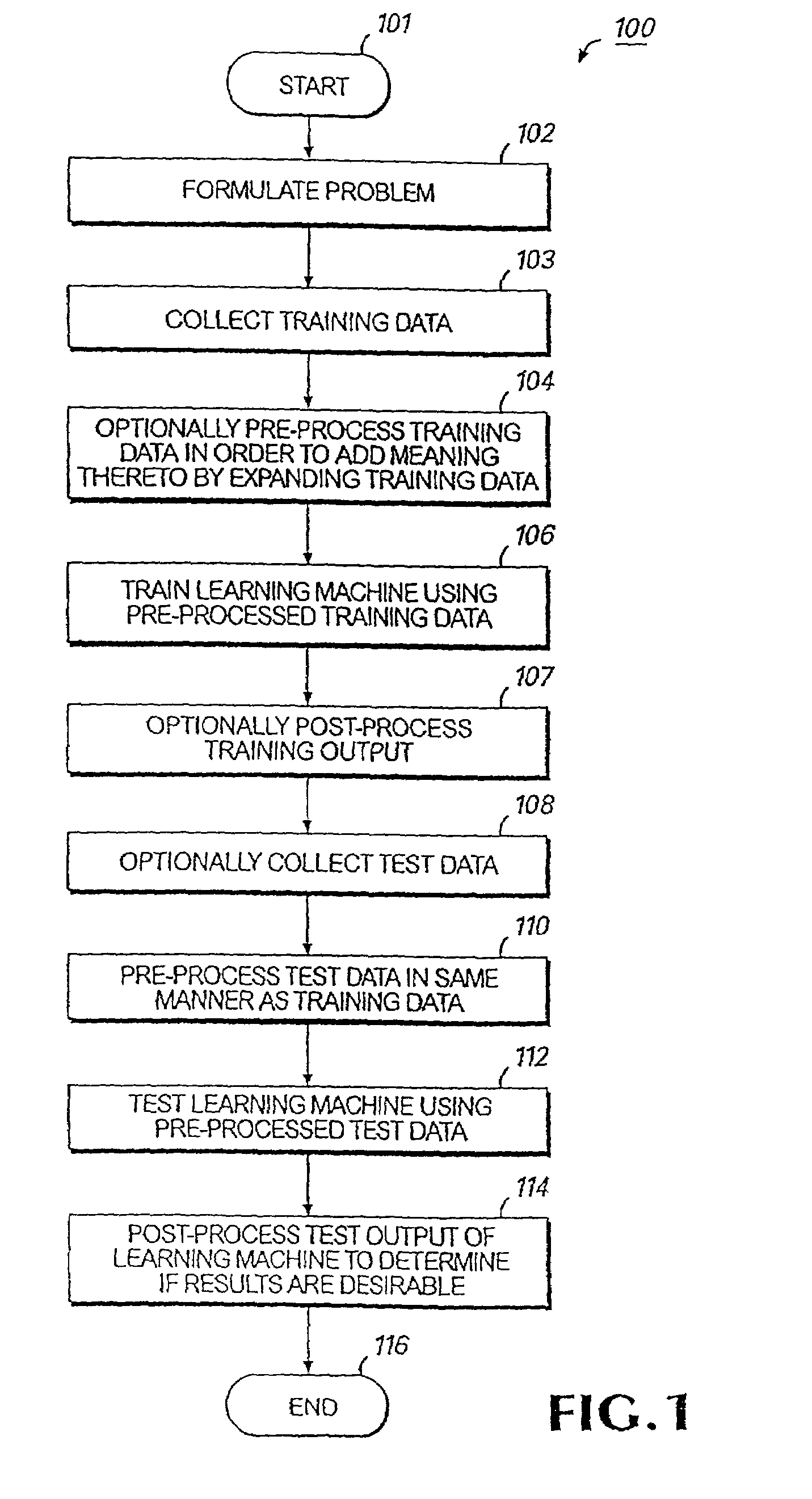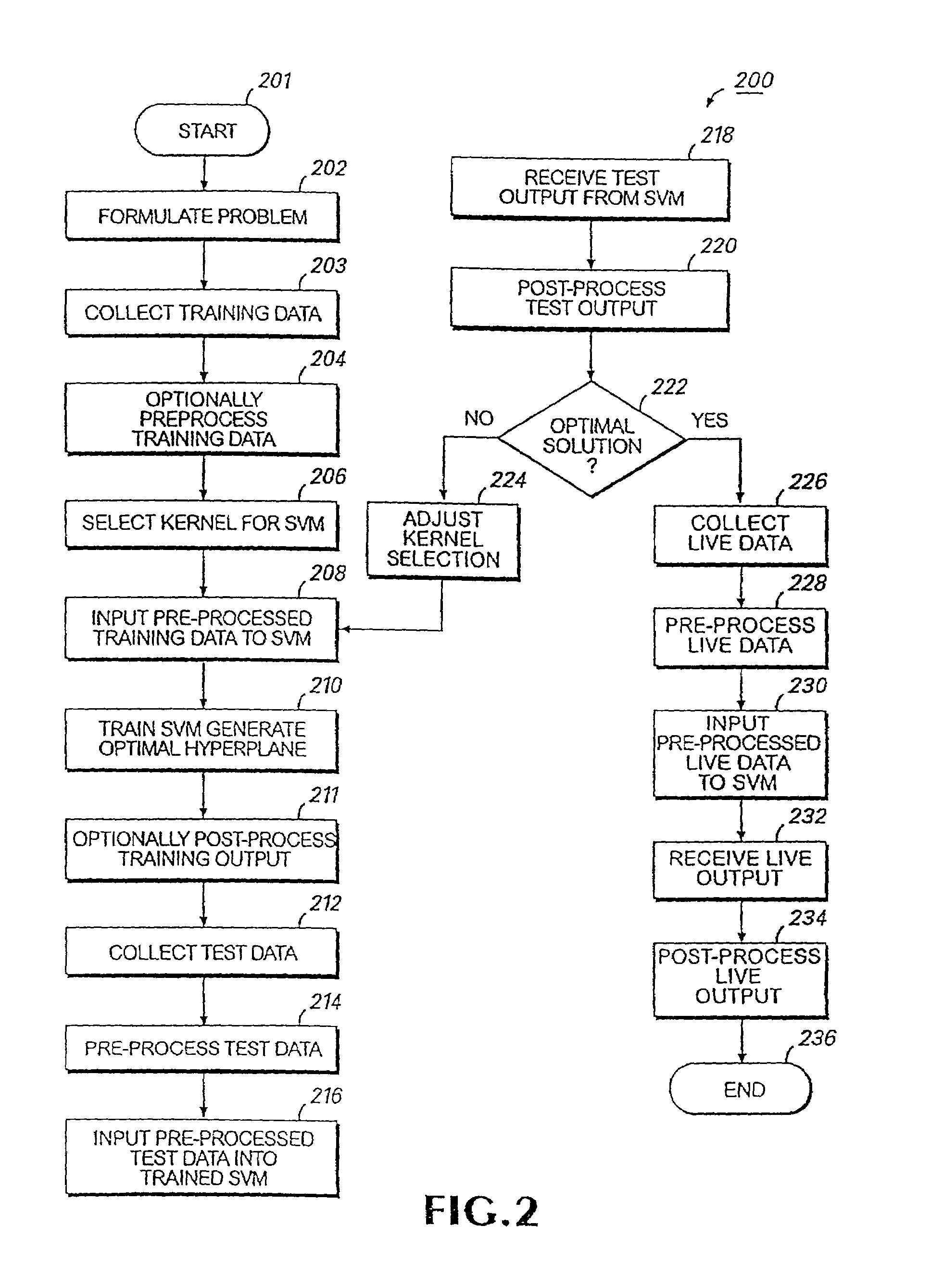Computer-aided image analysis
a computer-aided, image-based technology, applied in the field of image-aided analysis, can solve the problems of low contrast and blur, affect the effectiveness of the imaging method for its intended use, and affect the quality of the generalization, so as to improve the ability of the learning machine to analyze data, improve the quality of generalization, and increase the dimensionality of the training s
- Summary
- Abstract
- Description
- Claims
- Application Information
AI Technical Summary
Benefits of technology
Problems solved by technology
Method used
Image
Examples
Embodiment Construction
[0034]The following detailed description utilizes a number of acronyms which are generally well known in the art. While definitions are typically provided with the first instance of each acronym, for convenience, Table 1 below provides a list of the acronyms and abbreviations used herein along with their respective definitions.
[0035]
TABLE 1ACRONYMDESCRIPTIONATAPIattachment packet interfaceCTcomputed tomographyDMAdirect memory accessEIDEenhanced integrated drive electronicsFFTfast Fourier transformI / Oinput / outputIDEintegrated drive electronicsLANlocal area networkMRImagnetic resonance imaginingPETpositron emission tomographyRAMrandom access memoryROMread-only memorySCSIsmall computer system interfaceSPECTsingle-photon emission computed tomographySVMsupport vector machineWANwide area network
[0036]The present invention provides improved methods for analyzing images using learning machines. As used herein, the term “image” means the product of any imaging method, whether the image is ob...
PUM
 Login to View More
Login to View More Abstract
Description
Claims
Application Information
 Login to View More
Login to View More - R&D
- Intellectual Property
- Life Sciences
- Materials
- Tech Scout
- Unparalleled Data Quality
- Higher Quality Content
- 60% Fewer Hallucinations
Browse by: Latest US Patents, China's latest patents, Technical Efficacy Thesaurus, Application Domain, Technology Topic, Popular Technical Reports.
© 2025 PatSnap. All rights reserved.Legal|Privacy policy|Modern Slavery Act Transparency Statement|Sitemap|About US| Contact US: help@patsnap.com



